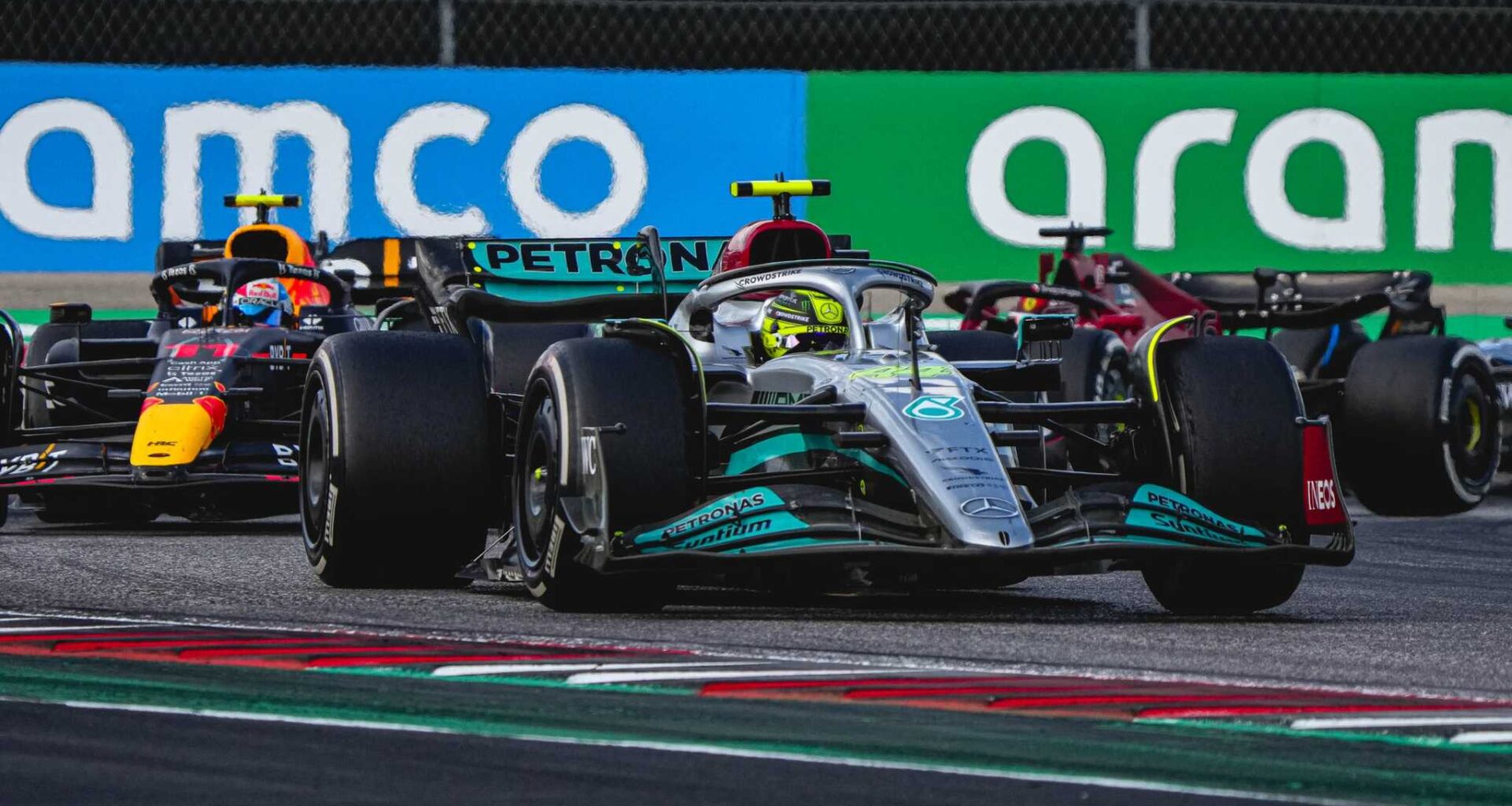Oracle Red Bull Racing driver Max Verstappen of Team Netherlands drives in Practice Session 1 at the Formula 1 Pirelli United States Grand Prix at Circuit of the Americas Friday October 18, 2024.
Jay Janner/Austin American-Statesman
I went to Formula One expecting fast cars and champagne showers. What I found at Austin’s Circuit of the Americas during the preliminary races of the U.S. Grand Prix on Friday was a sprawling, sun-baked spectacle where milliseconds matter, cowboy boots are formal wear, and the future of car tech is being written in real time.
Article continues below this ad
Lesson 1: Comfortable shoes are essential
Oracle Red Bull Racing F1 driver Max Verstappen rounds turn 17 during the Formula 1 Aramco United States Grand Prix at the Circuit of the Americas in Austin, Texas on Oct. 23, 2022.
Aaron E. Martinez / American-Statesman
COTA is massive. The sun is relentless. The F1 governing body, the FIA, even issued a heat hazard warning for the weekend. By the time the day wound down, I felt like I had walked the entire track. If you’re going to survive F1 weekend, prioritize comfort over everything. Your feet will thank you.
Lesson 2: The Grand Prix is a fashion show
Formula One fans Jason Knipp, right, and Hayden Knipp tag their bags at Austin-Bergstrom International Airport on Monday. They were traveling home to Kansas City, Mo., after attending the U.S. Grand Prix at Circuit of the Americas, their first F1 race.
Aaron E. Martinez/American-Statesman
Formula One fans take style seriously, and Austin puts a spin on it. Polos, team merch and logo caps were paired with cowboy boots, wide-brim hats and a layer of dust from walking the grounds. Color choices signal allegiances: Ferrari, red; McLaren, papaya; Red Bull, blue.
Article continues below this ad
But here’s the takeaway: what you wear matters less than how long you can stand on your feet. Comfort wins.
Lesson 3: The real race happens behind the garages
Daniel Liebmann, a tire technician with the Mercedes-AMG Petronas Formula One Team, prepares tires for drivers George Russell and Kimi Antonelli at the Formula 1 United States Grand Prix at Circuit of the Americas on Wednesday, Oct. 15, 2025. More than 400,000 race fans from around the world are expected to attend the three-day event, which culminates with the main race at 2 p.m. Sunday.
Jay Janner/Austin American-Statesman
While the crowd cheers, the real drama is invisible. Behind the Red Bull garages, billions of data points are moving between Austin and Milton Keynes, England in milliseconds.
Article continues below this ad
Morgan Maia with Oracle Red Bull Racing, described the operation as a symphony: “We’ve gone from grease to data. In 2011, we barely had high-speed internet. Now, we transfer five times as much data, in real time.”
Four seconds can mark the difference between first and fifth place. F1 may look like fast cars on a track, but it’s really a high-speed chess match powered by code.
Lesson 4: The future is already here
Mercedes AMG Petronas F1 driver Lewis Hamilton rounds turn 20 followed by a pack of drivers during the Formula 1 Aramco United States Grand Prix at the Circuit of the Americas in Austin, Texas on Oct. 23, 2022.
Aaron E. Martinez / American-Statesman
When the checkered flag drops, the work doesn’t stop. By 2 a.m. Monday, the Red Bull garage will be stripped bare, cars packed as the team prepares for the next race in Mexico City the following week.
Article continues below this ad
The sport is evolving fast. By 2026, nearly 90% of the cars will be redesigned — featuring part-electric engines, sustainable fuel and smarter systems everywhere, Maia said.
“F1 innovation always trickles down. Carbon fiber, seatbelts, hybrid tech — it all started here.”
So yes, you’re watching a race. But you’re also watching the future of transportation being tested live.
Lesson 5: Kygo illustrated F1’s calculated chaos
Kygo performs on the Honda Stage at the Austin City Limits Music Festival on Saturday October 8, 2016. (Tamir Kalifa for American-Statesman)
Tamir Kalifa for American-Statesman
By the time Kygo took the Super Stage for the post-race concert, the track had turned into a music festival. The crowd — sunburned and dust-covered — was ready to let loose. Kygo delivered exactly what they wanted: nostalgia and euphoria in equal measure.
Article continues below this ad
He bounced between 2010s classics and dreamy ’80s hits, mixing “Titanium,” “Hot Stuff,” “Just Dance” and a few Avicii tributes that had everyone shouting lyrics into the warm Texas night. Fireworks burst overhead, lights and lasers flickered in kaleidoscopic patterns, and strangers danced like it was the last night of summer.
It was messy, loud and over-the-top — but somehow perfectly orchestrated. F1 weekend in Austin is controlled chaos: heat, music, tech and tradition all colliding in one experience. By the finale, I was sunburned, exhausted and low-key in awe. F1 is fast and flashy, but it’s also a dance where every second, every choice — and yes, every cowboy boot — counts.

